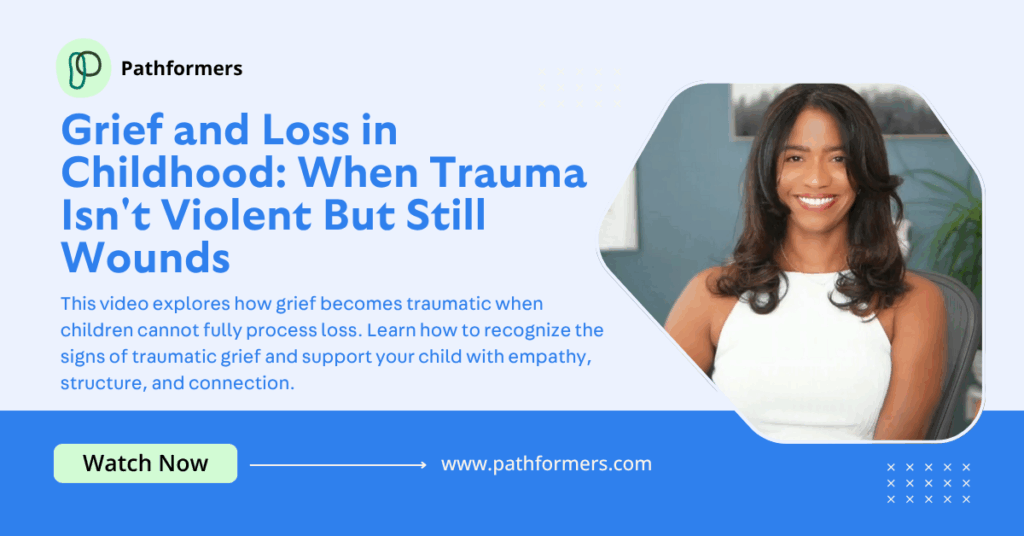In this video, we explore what happens when grief becomes too overwhelming for a child to process—when a loss, especially sudden or confusing, becomes traumatic. Many children lack the language to express grief, so it shows up in behavior, silence, or even physical symptoms. Parents often feel unsure of how to respond, especially when their child’s pain doesn’t look like “typical” grief. You’ll learn how to recognize signs of traumatic loss, what it means to support mourning versus melancholy, and how to help your child honor their loss.
Grief and Loss in Childhood: When Trauma Isn’t Violent But Still Wounds
Common Pain Points
Lorem ipsum dolor sit amet, consectetur adipiscing elit, sed do eiusmod tempor incididunt.
Feeling Powerless and Confused
Parents often feel lost when their child’s grief shows up as silence, anger, or regression instead of sadness.
Minimizing the Impact of Loss
Well-meaning adults may assume young children “won’t remember,” unintentionally dismissing deep emotional wounds.
Uncertainty About How to Help
Many caregivers worry they’ll say or do the wrong thing, or that talking about the loss will make things worse.
Module Benefits
Lorem ipsum dolor sit amet, consectetur adipiscing elit, sed do eiusmod tempor incididunt.
Recognition and Understanding
Learn to identify when grief crosses into trauma and how it may present in children of different ages.
Supportive Language and Tools
Gain strategies to help your child process loss through ritual, expression, and attuned presence.
Pathways to Healing Together
Discover how to create family narratives, validate emotion, and commemorate loved ones as a source of connection and strength.
Help Steer Your Child’s Development
Subscribe to our newsletter for exclusive video updates, expert parenting strategies, and the latest insights in child development and mental health.

